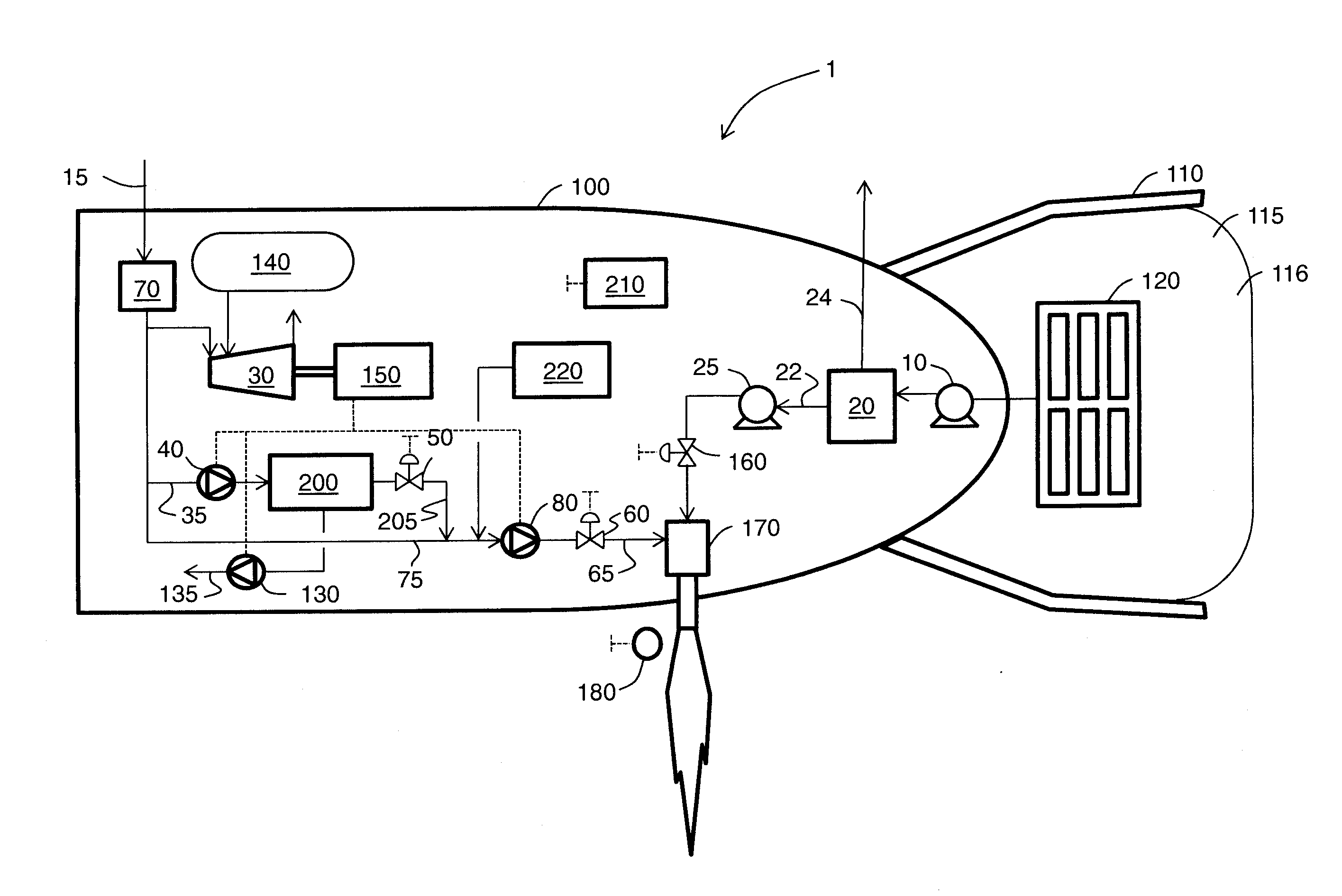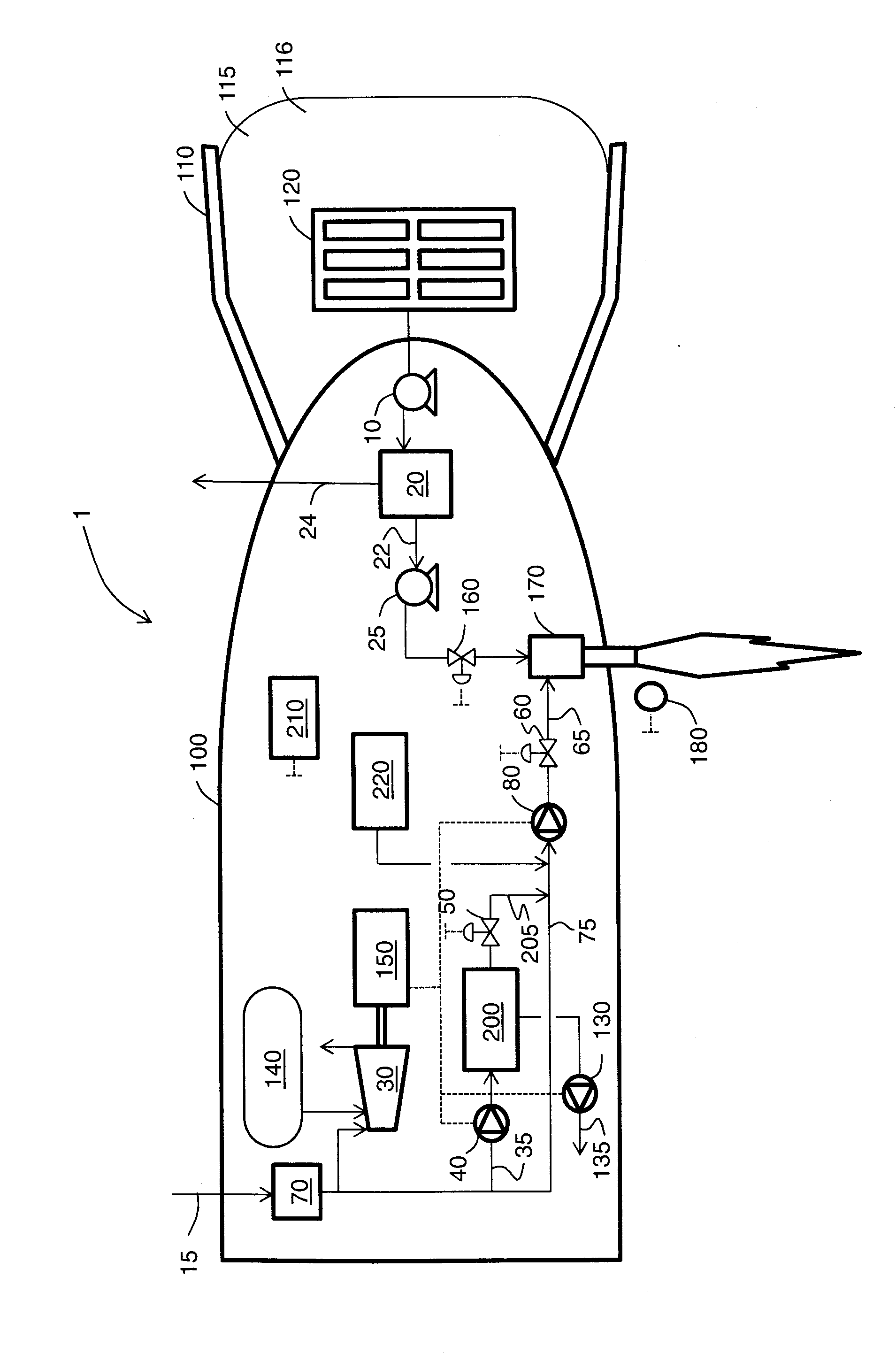Combustion of Oil From a Marine Oil Spill
- Summary
- Abstract
- Description
- Claims
- Application Information
AI Technical Summary
Benefits of technology
Problems solved by technology
Method used
Image
Examples
example
[0089]The stoichiometric oxygen requirement for combusting 200 BPH (barrels per hour) oil flow rate is calculated to be about 60,000 Nm3 / hr. If the stoichiometric amount of oxygen is supplied by injecting compressed air, the compressed air flow rate is about 285,000 Nm3 / hr.
[0090]If the stoichiometric amount of oxygen is supplied by injecting an oxygen-containing gas wherein the oxygen-containing gas has 50 volume % oxygen, the total flow rate of the oxygen-containing gas is about 204,000 Nm3 / hr. The flow rate of substantially pure industrial oxygen (90-93 vol. % O2, typical VSA quality) is about 24,000 Nm3 / hr and the balance compressed air.
[0091]If half of the stoichiometric amount oxygen is supplied by injecting an oxygen-containing gas wherein the oxygen-containing gas has 50 volume % oxygen, the total flow rate of the oxygen-containing gas is about 102,000 Nm3 / hr. The flow rate of substantially pure industrial oxygen (90-93% VSA spec) is about 12,000 Nm3 / hr and the balance compre...
PUM
 Login to view more
Login to view more Abstract
Description
Claims
Application Information
 Login to view more
Login to view more - R&D Engineer
- R&D Manager
- IP Professional
- Industry Leading Data Capabilities
- Powerful AI technology
- Patent DNA Extraction
Browse by: Latest US Patents, China's latest patents, Technical Efficacy Thesaurus, Application Domain, Technology Topic.
© 2024 PatSnap. All rights reserved.Legal|Privacy policy|Modern Slavery Act Transparency Statement|Sitemap


